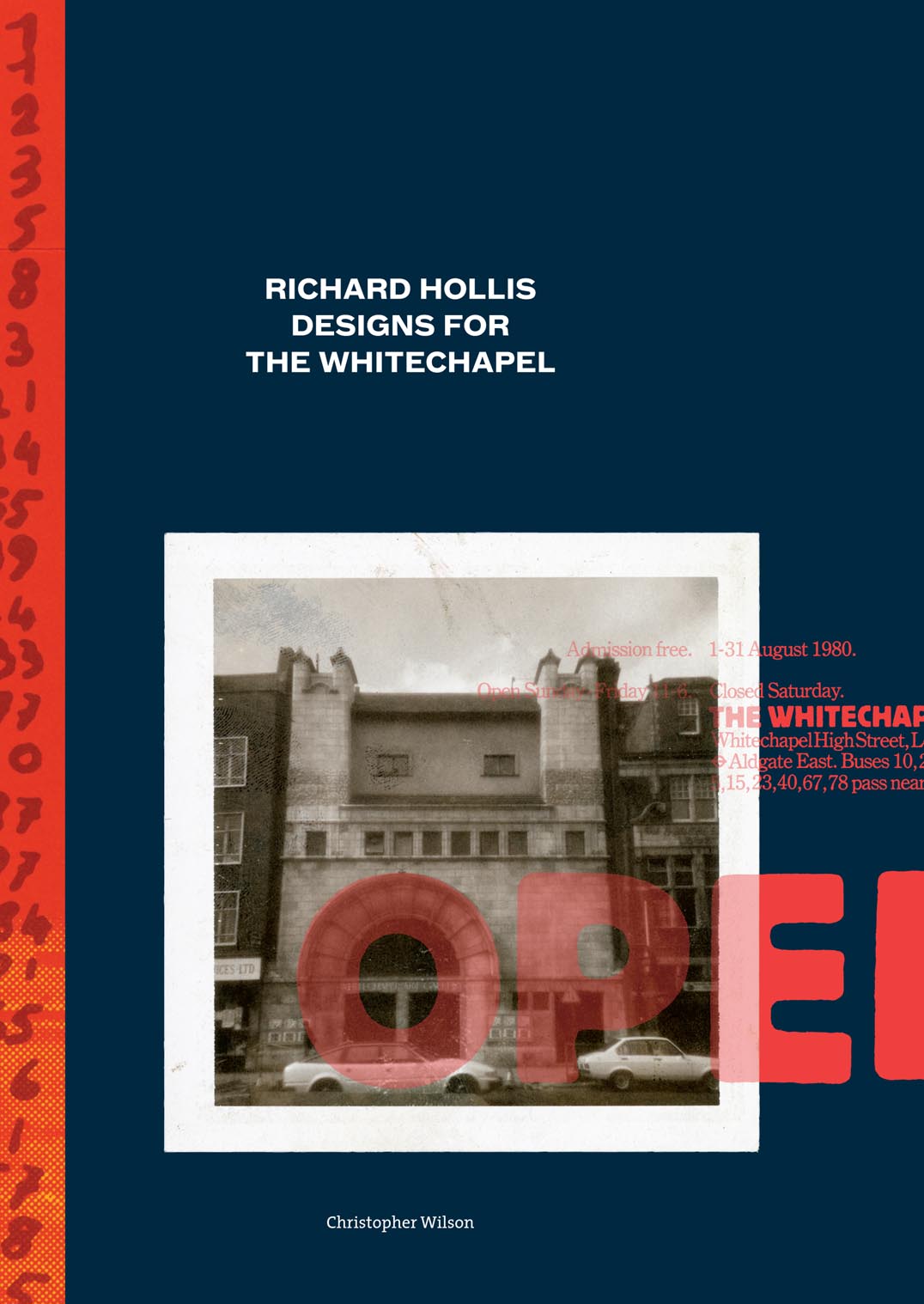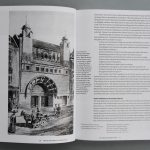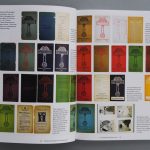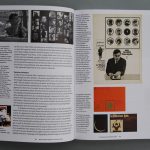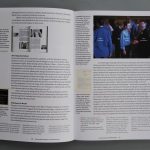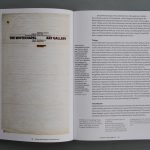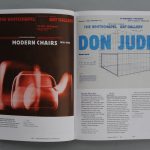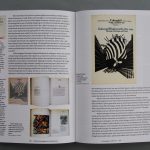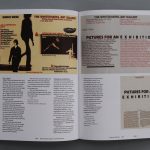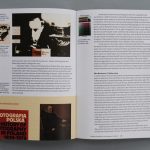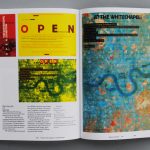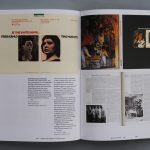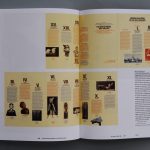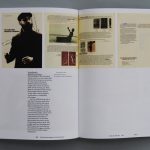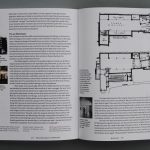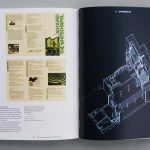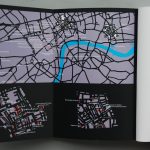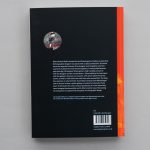Richard Hollis was the graphic designer for London’s Whitechapel Art Gallery in the years 1969–73 and 1978–85. In this second period, under the directorship of Nicholas Serota, the gallery came to the forefront of the London art scene, with pioneering exhibitions of work by Georg Baselitz, Anselm Kiefer, Joseph Cornell, Philip Guston, Frida Kahlo and Tina Modotti, among others. Hollis’s posters, catalogues, and leaflets, conveyed this sense of discovery, as well as being models of practical graphic design. The pressures of time and a small budget enhanced the urgency and richness of their effects. Christopher Wilson’s monograph is an exemplary examination of a body of graphic design. This book matches the spirit of the work it describes: active, passionate, aesthetically refined, and committed to getting things right. As in Hollis’s work, ‘design’ here is a verb as much as a noun.
Contents
Preface
Acknowledgements
The Whitechapel before Hollis
Hollis before the Whitechapel
Action this day, 1969–73
Work, 1969–73
Interregnum, 1973–78
‘More professional, more ambitious’, 1978–85
Work, 1978–85
Aftermaths
Materials and processes
Picture sources
Bibliography
Index
Synopsis
Richard Hollis designs for the Whitechapel has two main characters: the British graphic designer Richard Hollis and the Whitechapel Art Gallery in East London. The opening two chapters of the book introduce each of them. Then – in chapters that form its centre – the interaction of Hollis and the Whitechapel is presented. The book reproduces much of what was printed for the Whitechapel during the two periods in which Hollis worked for the gallery: 1969–73 and 1978–85. There are extended critical captions on the work reproduced. These two phases of the gallery’s life were in several respects formative, both for the institution itself and for the wider cultural and social life of Britain. Coverage is completed with considerations of the ‘interregnum’ period (1973–78) and the years after 1985, when Peter Saville became the gallery’s designer. Hollis’s Whitechapel years were a time of radical change in the methods of print production: the book documents and explains the technical shifts from specification for hot-metal composition and letterpress printing, through photocomposition, rub-down lettering, paste-up, and on to desktop publishing.
Wilson’s discussion is illuminated by his extended interviews with Hollis, with those who worked at the Whitechapel, and with others involved in these events. Quotations from these interviews enliven the narrative. And by looking closely at one period of the designer’s work, Wilson finds the model for Hollis’s whole production. So the book functions partly as a history of one of the essential components of the London art world in that time, and as a survey of the work of ‘one of the finest British graphic designers of the past 50 years’ (Rick Poynor).
Reviews
It is design scholarship and design journalism … It’s not a little book – nearly 400 pages, profusely illustrated, footnoted, lots of detail. It is just enthralling.
Michael Bierut, Design Observer podcast, episode 114
Although it features a thorough biography of Hollis’s early years, and reproductions of much of his work (Hollis’s mistakes and regrets feature, as well as his successes), this dense 400-page book is far from the conventional monograph or coffee-table celebration. …
Wilson … captures the nuances of Hollis’s personality and work, and the minutiae of his methods, through discussion of his practical techniques, rigorous approach, philosophy, personal life and how much he charged (or, as pointed out, ‘undercharged’) for projects. The depth of Wilson’s research shines through, especially in the extensive interviews with the man himself and those who have considered Hollis a friend, colleague, acquaintance or teacher over the decades. The roll-call of names referenced throughout the book reads like a Who’s Who of the British art and design world of the latter half of the twentieth century. …
Wilson’s method – focusing on Hollis’s work for one client – becomes a lens through which a story can be told with a richness not usually found in books on design. The book has two protagonists (and consequently double the stories), the second being the Whitechapel Gallery itself, which has also lacked a book dedicated to its history. …
As well as being an in-depth exploration of the working relationship and story between designer and client, the book’s span and complexity means that it also functions as a potted social history of postwar Britain, showing the changes that occurred in the country’s politics, culture, design industry and art world. …
Wilson has told a fascinating and illuminating story.
Theo Inglis, Eye, no. 95, 2017
This 400-page volume is the most exhaustive investigation yet of Hollis’s style and influence. The layout features multiple entry points for the reader, including extended captions, footnotes and myriad images of artefacts, people and environments. Because Wilson is a graphic designer himself, and worked from 1999 to 2004 in Hollis’s studio, the reader gains a unique perspective, as he draws on inside knowledge of design and production processes and the specific practices of typography and graphics. The author’s familiarity with his subject’s network of professional contacts can be seen in the use of interviews, primary documents and Hollis’s own rich personal archive.
Equally, the book is a history of the Whitechapel Gallery. It explores the way in which shows were curated at a time when art and design were going through radical shifts in perspective. Wilson pitches a parallel narrative as a collaboration between the gallery and Hollis, and concentrates on two periods, 1969–1973 and 1978–1985. This is the story of commissioner and designer working together to produce a distinctive body of work. As such, it begs the reader to luxuriate in content and form; in the process, he or she is led through the inner workings of a much-loved institution at two seminal moments in its past.
Teal Triggs, The World of Interiors, November 2017
Christopher Wilson’s excellent ‘Richard Hollis designs for the Whitechapel’, the final book from Hyphen Press, is not only a detailed analysis of the work of Hollis, with whom Wilson collaborated from 1999 to 2004, but a story of aesthetic and social change as told through the gallery, which had a reputation as the most exciting exhibition space in London. Mixed with the archival graphic material is a rich history that traces the introduction of contemporary art in Britain.
Christopher Turner, London Review of Books, 24 May 2018
This is one of the best books on graphic design ever, Michael Bierut, 2021
